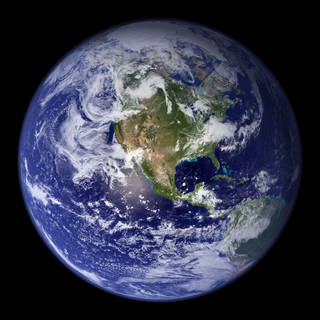What is the greenhouse effect?
Sunlight reaches the Earth. Some energy is reflected back into space. Some is absorbed and re-radiated back as heat. Most of the heat is absorbed by greenhouse gases and reflected in all directions, warming the Earth.
What are the main types of greenhouse gases?
Gases such as water vapor, methane, carbon dioxide, methane, nitrous oxide and chlorofluorocarbons (CFCs).
Where do greenhouse gases come from?
Water vapor is the most abundant greenhouse gas, and it acts as a feedback to the climate. Water vapor increases as the Earth’s atmosphere warms, but so does the possibility of clouds and precipitation, making these some of the most important feedback mechanisms to the greenhouse effect.
Carbon dioxide is released through natural processes such as respiration and volcanic eruptions and through human activities such as deforestation, land use changes, and burning fossil fuels.
Methane is a hydrocarbon gas produced both through natural sources and human activities, including the decomposition of wastes in landfills, agriculture, and especially rice cultivation, as well as ruminant digestion and manure management associated with domestic livestock. On a molecule-for-molecule basis, methane is a far more active greenhouse gas than carbon dioxide, but also one which is much less abundant in the atmosphere.
Nitrous oxide is produced by soil cultivation practices, especially the use of commercial and organic fertilizers, fossil fuel combustion, nitric acid production, and biomass burning.
Chlorofluorocarbons (CFCs) is a synthetic compound entirely of industrial origin used in a number of applications, but now largely regulated in production and released to the atmosphere by international agreement for their ability to contribute to destruction of the ozone layer.
How is the Earth being affected by the greenhouse effect?
Global climate change has already had observable effects on the environment. Glaciers have shrunk, ice on rivers and lakes is breaking up earlier, plant and animal ranges have shifted and trees are flowering sooner. Effects from global climate change are now occurring: loss of sea ice, accelerated sea level rise and longer, more intense heat waves.
In the future, effects by climate change will worsen: temperature will continue to rise, frost-free season will lengthen, changes in precipitation patterns, droughts and heat waves occur more frequently, hurricanes will become stronger and more intense, sea level will rise 1-4 feet by year 2100, the Arctic region is likely to become ice-free.
How can we help?
From the economic perspective, the use of renewable energy is very attractive. For example,
the wind turbines can save $7425 billion and ranks second importance to the total atmospheric
carbon dioxide reduction. Another renewable energy is the rooftop solar. There is a shift towards this clean and reliable electricity. Many high schools, hospitals and even residential houses have installed solar panels. This is a good way to use our free solar resources, especially in sunny California.
Besides using renewable energy, everyone can help to reduce climate change by reducing food waste. There are lots of things we can do. We should avoid buying too much food. When we stack too much food at home, sometimes the food expires or decay, and we may need to throw them away. We can also reduce food waste by turning the food scraps into nutrient-rich fertilizer.
There are many other ways to help climate change. Carpool, use of bioplastics, consume a plant-rich diet and use of automation systems are recommendable solutions. I believe we still have hope to save our Earth from climate change only if everyone is determined to do something to change the world.
Photo Source:
https://www.nasa.gov/topics/earth/overview/index.html



